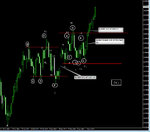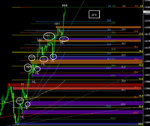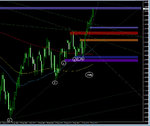I will indulge one last time, I am not here to argue semantics yet thats all you want to do.
You think that the statistics 101 concept of variance is profound? Obviously you do, because you go on and try to justify your post with some trivial winrate/roi comparison. With 1:1 risk reward your winrate needs to be > 50%. with 1:2 risk reward your winrate needs to be > 33%. This is 9th grade algebra that you are trying to pass off as non-trivial.
Wait maybe you dont think its all that profound, because then at the end you admit that it is 'basic' after all.
Earlier you wrote this brilliance:
If you are expecting to lose, then you need to refine your system. Expecting loss and Accepting loss are two very different things. If you 1:2 r/r system wins at 40% obviously you are +ev. So you will accept losing trades 60% of the time. But if you go into the trade expecting to lose, then you need to re-evaluate your trigger.
But the thing is, I know you know this already. I'm not telling you anything new. You're just sloppy with your language because you want to have an argument to show your knowledge instead of a discussion of the underlying topic.
Stupid, perhaps yes, and thats probably why this thread quickly deteriorated. Only stupid because it riled up the trolls and prevented real discussion. I would rather describe it as 'sensationalized' since at its core the topic could be easily reworded as "how can you be sure of your edge?" But if I used that I probably wouldn't get many replies
Whether you want to argue over the word "prediction" or not, whatever your system is, you are saying that given your risk/reward parameters, you think that X will happen more often than not to give the system positive EV. Betting your money that something will happen more often than not, is a prediction. You are predicting that your model will provide success more than the 50%, 33%, whatever winrate required.
if you are using automated mechanical systems, presumable you've backtested these systems which gives you the confidence in your predictions. In this case, your answer to the topic could be as simple as "statistical historical analysis"




